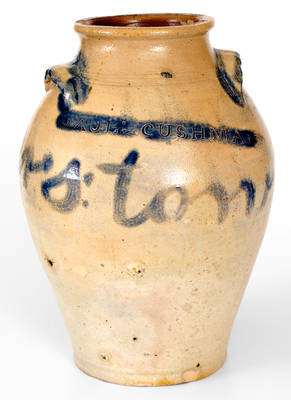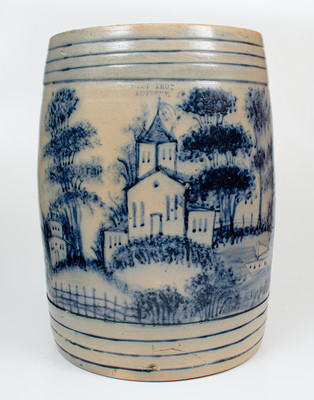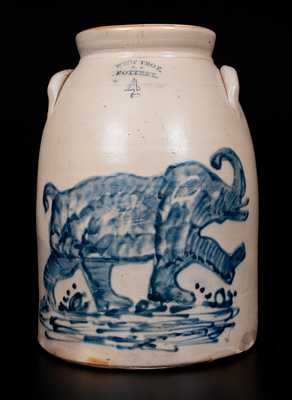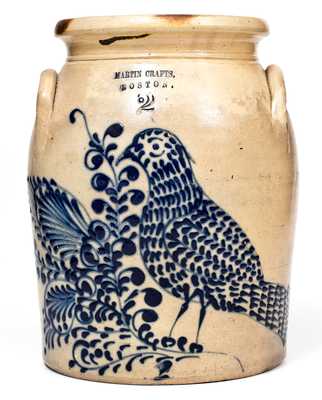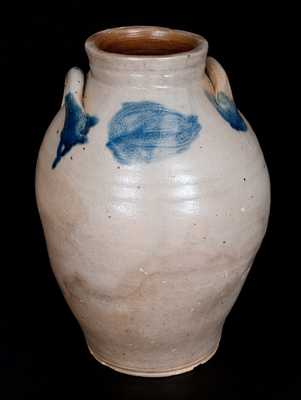Extremely Rare and Important Three-Gallon Stoneware Keg-Form Cooler with Incised Fish Decoration, Stamped "ATHERTON & TRICE. / ALBANY.", New York State origin, circa 1820-1826, ovoid form with raised banding, circular bung hole at base, and small pouring hole in top surface, the front decorated with an incised and cobalt-highlighted design of a swimming or leaping fish. Heavy diagonal incised slashes throughout the creature's body form stylized scales. Additional slashes at the end of its tail imparts motion to the design. Heavily-brushed cobalt decorates the cooler's raised bands and surrounds the bunghole. Impressed above bunghole in large letters "ATHERTON & TRICE. / ALBANY.". Signed examples of Atherton & Trice stoneware are considered rare. The business involved grocer, Stephen Atherton, and potter, James Trice, on a Washington Street property opposite Paul Cushman's shop. The location was shared by the well-known potter brothers, Jonah and Calvin Boynton, indicating the two were likely involved in the production of Trice's ware. While the majority of signed Atherton & Trice pieces are simply-decorated utilitarian forms, this example, rare for its maker's mark alone, features an outstanding early keg form and strong incised figural decoration. The swimming or leaping fish with distinctive curved body can be related to that found on the midsection of an iconic Paul Cushman churn, which is also famously-decorated with a cat churning butter and another fish suckling a cow. The Boynton brothers' presumed involvement at both the Cushman and Atherton & Trice operations suggests one of these two brothers may have been the decorator of this cooler. This example is only the fourth Albany keg-form cooler we have ever had the pleasure of offering. It is regarded as one of the best Albany stoneware objects to come to auction in years, as well as one of the finest pieces by the firm of Atherton & Trice known. A similar example with less cobalt application to the fish is in the collection of the Smithsonian National Museum of American History in Washington, D.C. Literature: For more information, see Paul Cushman: The Work and World of an Early 19th Century Albany Potter, The Albany Institute of History & Art, pp. 62-63 and 76. Two small chips to bunghole. Scattered light exfoliation to reverse. A glazed-over, pre-firing dent to shoulder near reverse. Shallow chips to the original pouring hole in cooler's top. H 15".







